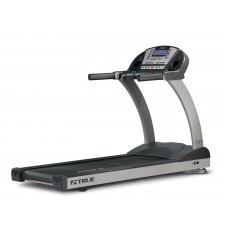Treadmills can offer a lower-impact alternative to outdoor running, providing that the cushioning system is properly built. Better treadmills’ belts and decks are designed to help your joints absorb shock upon impact, while providing a firm push-off. Orthopedic belts take your comfort to the next level, and help make your treadmill workout even safer for your joints. They are thicker than regular treadmill belts and designed to further reduce the amount of concussion when you walk or run. The ribbed surface of a good orthopedic belt also is designed to provide better grip for running shoes, and is also especially helpful in a higher incline workout. Many new treadmills already have orthopedic belts, or you can replace the belt on your current treadmill with an orthopedic belt. To do this, you will need a treadmill with rollers that are at least 2.4”.
Thicker belts create more heat, and can cause wear on your treadmill’s roller bearings, and drive system. However, many premium treadmill manufacturers have allowed for this and are able to provide the advantages of an orthopedic belt without maintenance issues. TRUE Treadmills offer their own orthopedic belt designed to work with their machines, and they have received strong industry admiration. In fact, Treadmill.com said that TRUE has the “best orthopedic belt system on the market.” If you invest in a quality treadmill, an orthopedic belt can be a wise addition to help reduce joint stress and injury.

